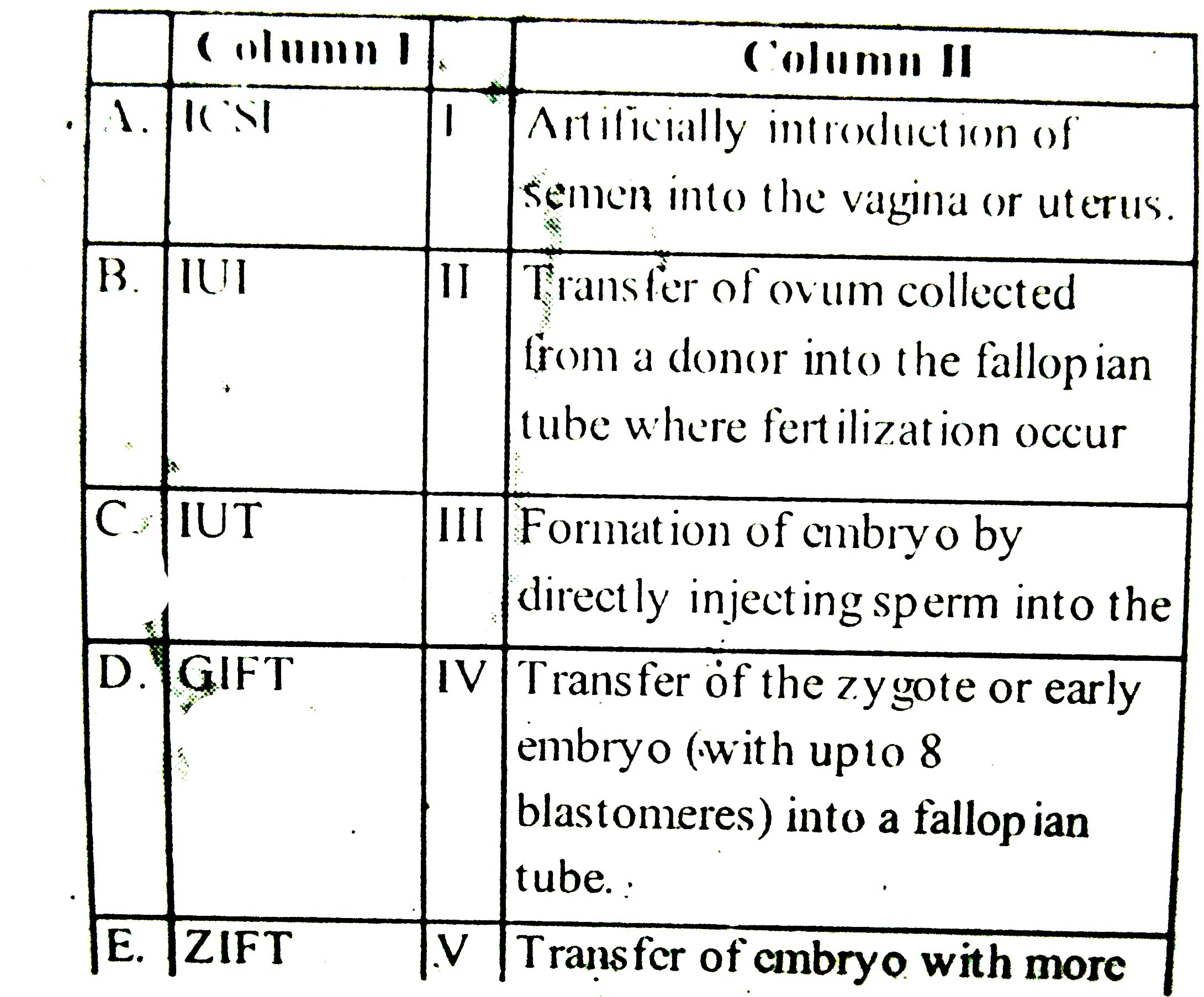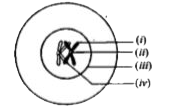Select correct features for Pinus.
(i) Monoecious plant (ii) Pinnate leaves
(iii) Sunken stomata (iv) Heterosporous
I,ii & iv
I,iii & iv
ii,iii & iv
I,ii,iii & iv
The correct Answer is:B
To solve the question regarding the correct features of Pinus, we will analyze each feature one by one:
1. Monoecious plant:
- Pinus is indeed a monoecious plant, meaning it has both male and female reproductive structures (cones) on the same individual. Therefore, this feature is correct.
2. Pinnate leaves:
- Pinnate leaves are typically characterized by a feather-like arrangement of leaflets. However, Pinus has needle-like leaves, which are not considered pinnate. Hence, this feature is incorrect.
3. Sunken stomata:
- Pinus has sunken stomata, which help reduce water loss through transpiration, especially in xerophytic conditions. This adaptation is crucial for survival in dry environments. Thus, this feature is correct.
4. Heterosporous:
- Pinus is a heterosporous plant, meaning it produces two types of spores: microspores (male) and megaspores (female). Therefore, this feature is also correct.
Now, summarizing the correct features:
- Correct features: Monoecious plant, Sunken stomata, Heterosporous.
- Incorrect feature: Pinnate leaves.
Thus, the correct answer includes the features: 1st (Monoecious plant), 3rd (Sunken stomata), and 4th (Heterosporous).
Final Answer:
The correct features for Pinus are:
- (i) Monoecious plant
- (iii) Sunken stomata
- (iv) Heterosporous
- Pinus is indeed a monoecious plant, meaning it has both male and female reproductive structures (cones) on the same individual. Therefore, this feature is correct.
- Pinnate leaves are typically characterized by a feather-like arrangement of leaflets. However, Pinus has needle-like leaves, which are not considered pinnate. Hence, this feature is incorrect.
- Pinus has sunken stomata, which help reduce water loss through transpiration, especially in xerophytic conditions. This adaptation is crucial for survival in dry environments. Thus, this feature is correct.
- Pinus is a heterosporous plant, meaning it produces two types of spores: microspores (male) and megaspores (female). Therefore, this feature is also correct.
- Correct features: Monoecious plant, Sunken stomata, Heterosporous.
- Incorrect feature: Pinnate leaves.
The correct features for Pinus are:
- (i) Monoecious plant
- (iii) Sunken stomata
- (iv) Heterosporous
Topper's Solved these Questions
- PLANT KINGDOM Book:VMC MODULES ENGLISHChapter:PLANT KINGDOM Exercise:IMPECCABLE
Explore 56 Videos
- PLANT KINGDOM Book:VMC MODULES ENGLISHChapter:PLANT KINGDOM Exercise:Illustration
Explore 30 Videos
- PLANT KINGDOM Book:VMC MODULES ENGLISHChapter:PLANT KINGDOM Exercise:ENABLE
Explore 49 Videos
- ORGANISMS & POPULATIONS Book:VMC MODULES ENGLISHChapter:ORGANISMS & POPULATIONS Exercise:In - Chapter exercise C
Explore 10 Videos
- PRINCIPLES OF INHERITANCE AND VARIATIOBook:VMC MODULES ENGLISHChapter:PRINCIPLES OF INHERITANCE AND VARIATIOExercise:IMPECCABLE
Explore 56 Videos
Similar Questions
Find the correct order for instrument used for measuring (i) Transpiration (ii) Size of stomata (iii) Atmospheric pressure (iv) Osmosis
View SolutionHow many of the following feature(s) is/are commonly concerned with Pinus as well as Cycas?
(a) Pinnate leaves
(b) Mycorrhiza
(c) Branched stem
(d) Direct pollination
(e) Female strobili
(f) Non-motile sperms
(g) Simple leaves
(h) Exposed ovule.
Mark the correct option.
View Solution
Knowledge Check
Read the following statements about adaptations in desert plants and select the correct ones.
(i) They have a thick cuticle on their leaf surfaces.
(ii) They have stomata present in deep sunken pits.
(iii) They use CAM pathway for photosynthesis.
(iv) They have flattened stems and large sized leaves.
(v) Their stomata remain closed during the day.A(i),(ii) and (iii)B(ii),(iii) and (v)C(i),(ii) and (iv)D(i),(ii),(iii) and (v)Read the following statement regarding bryophytes and select the correct answer.
(i). Bryophytes lack true roots, stem and leaves.
(ii). The main plant body is haploid
(iii). Sex-organs are unicellular and non-jacketed
(iv). Fertilisation produces an embryo inside the water.AStatement I and II are trueBStatement ii and iii are true.CStatement iii and iv are correctDAll statements are true.
Read the following and select the correct option :
A. Carnivora is a/an (i) that involves (ii) and Canidae.
B. Petunia and (iii). belongs to Family (iv)
View SolutionDifferentiate between the following:-
(i) red algae and brown algae
(ii) liverworts and moss
(iii) homosporous and heterosporous pteridophyte
(iv) syngamy and triple fusion
View SolutionFor an ecosystem, the two main structural features are-
(i) species composition
(ii) Energy flow
(iii) Decomposition
(iv) Stratification
View SolutionSelect the correct match of the techniques given in column I with its feature given in column II.

View SolutionLabel the parts (i), (ii), (iii) and (iv)

View SolutionWhich of the following is correct with respect to Plantae ?
(i) In plants, antheridia are the female sex organ.
(ii) Except algae, all plants bear embryo .
(iii) All pants are heterosporous .
View Solution